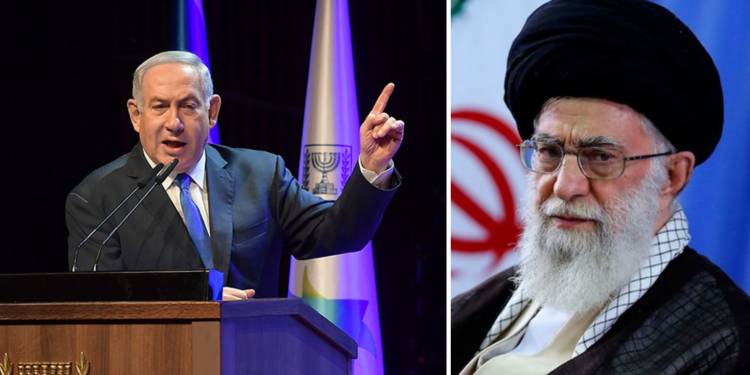What does one need for a multilateral war? Big powers, a multitude of intertwined conflicts and rogue, non-state actors. West Asia seems to have it all especially with the entry of China. Beijing is going to invest 400 billion US Dollars in the Shi’ite country. This is a huge upgrade for Tehran that has decades-old ambitions of taking on Israel, Saudi Arabia, and the US. What was earlier Saudi Arabia-Israel-US vs Iran is now becoming Saudi Arabia-Israel-US v. Iran-China. This single development pushes West Asia towards a major conflict.
No one could have anticipated that China would push almost half a trillion dollars- virtually an entire economy into Iran.
The Iran-China roadmap for the next 25 years does have a military element. According to an OilPrice.com report, the military element seems rather disturbing.
By empowering Iran, China is trying to augment its own influence in the Middle East or at least get a grip on Iran’s strategic assets and human intelligence scattered all over the region.
China is going to invest in Iranian oil and other hydrocarbons, as well as transport and manufacturing infrastructure. But what comes as a real cause of worry are claims of Russian and Chinese military infrastructure taking deep roots in Iran.
Electronic Warfare (EW) capabilities, Cyberwarfare, missiles, air defence systems, and jammers are all in the reckoning. This comes as a huge strategic threat to the two biggest players in West Asia- Israel and Saudi Arabia.
As per OilPrice.com, Iranian officials have said, “One of the Russian air jamming systems is going to be based in Chabahar and will capable of completely disabling the UAE’s and Saudi Arabia’s air defences, to the extent that they would only have around two minutes of warning for a missile or drone attack from Iran.”
Iran is therefore looking to match Israel’s superior intelligence apparatus and technological prowess by securing Chinese partnership. China stands to gain with this strategic partnership as Iran has a lot of presence throughout the Middle East.
General Soleimani, whose killing had flared up US-Iran tensions earlier this year, himself enjoyed the devoted loyalty of thousands of fighters across Iraq, Syria, Lebanon, Yemen and the Gaza Strip.
Iran has the support of a number of Shia militias such as the Lebanon-based Hezbollah, an armed political group in the 1980s to counter Israel. Hezbollah carried out an 18-year guerrilla war against the Israeli forces and has even partnered with the ISIS in the past.
Similarly, Iran also backs the Houthis in Yemen. In Iraq, Tehran has been continuously shoring up its influence after Saddam Hussein, an Arab Sunni leader was taken out by the US in 2003. There is a Shia-dominated government in Baghdad which goes in Iran’s favour. All these assets are up for grabs if Beijing invests heavily in China.
But Chinese investments make Iran unusually powerful and even more dangerous for peace and stability in West Asia. Iran has some nasty plans up its sleeves. Ever since the Iranian Revolution of 1979 established the Islamic Republic, it has been talking of ‘wiping out Israel’.
Supreme Leader Ayatollah Ali Khamenei himself supports the idea of the “disappearance of Israel.” Israel, on the other hand, used its impressive intelligence and technological superiority to shatter Tehran’s Nuclear ambitions. Israel has used a number of means to ensure that Iran doesn’t get the much-cherished nuclear weapon.
Recently, it was reported by a Kuwaiti newspaper that an Israeli cyber-attack had caused a fire at Iran’s underground Natanz nuclear enrichment facility. Two bomb blasts- one related to uranium enrichment and the other for missile production were reported. Later, Iran tried to hack into Israel’s water infrastructure as a purported retaliation.
Israel has been able to keep Iran in check all this while, but Chinese investments mean that Iran can exert more and more influence creating dangerous friction in the region. Iran might be able to step up its game in terms of cyber warfare, satellite technology and core defence capabilities.
Apart from getting a Nuclear weapon and obliterating Israel, Iran has another long-term ambition- challenging Saudi Arabia’s position as the undisputed king of the Muslim world. Iran has sectarian differences with Saudi Arabia and also wants to export its own model of a revolutionary theocracy beyond its boundaries.
Iran competes with Saudi Arabia for influence in Syria, Bahrain, and Yemen. A more powerful Iran is a bigger strategic threat for Saudi Arabia. With greater firepower, Iran could end up targeting countries like Bahrain which are being supported by Riyadh.
A single move in West Asia could spiral into a huge, multilateral conflict. The sheer multitude of non-State actors, short-tempered militias, and reckless mercenaries tend to suck the region into unstoppable violence. Moreover, any misadventures from a China-backed Iran could also lead to the US joining the conflict especially because of its strong ties with both Israel and Saudi Arabia.
The potential build-up of an Iran-China axis is not without fault-lines. China’s adversary India, for example, has deep interests in Iran including the Chabahar port. Beijing could also broaden the area of conflict and use its influence in Iran and Pakistan to encircle Afghanistan which would lead to American interests in the country getting entrapped.
West Asia is thus quietly getting pushed towards a major conflict with two powerful axes building up against each other. China’s Iran push could thus bring an entire region at the brink of unprecedented devastation.


































